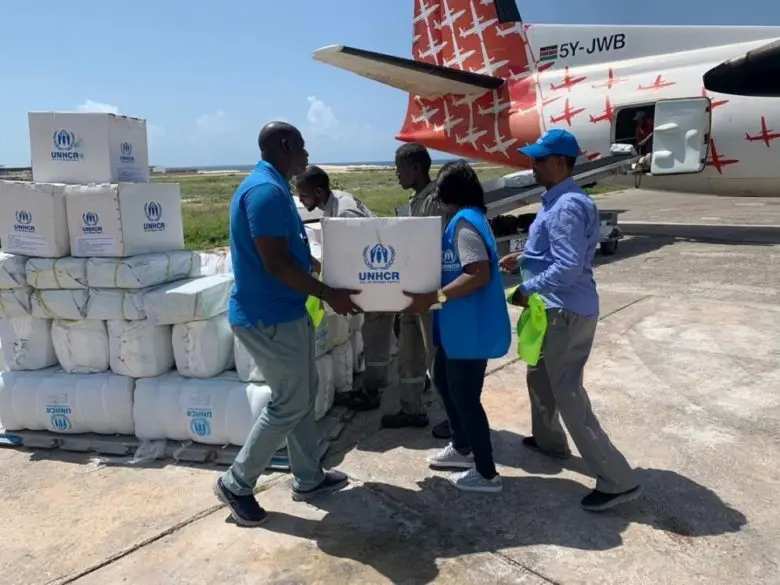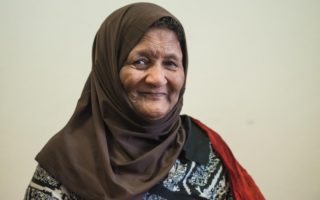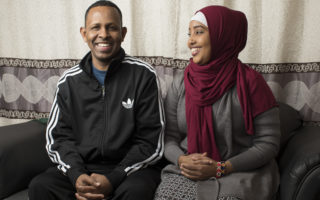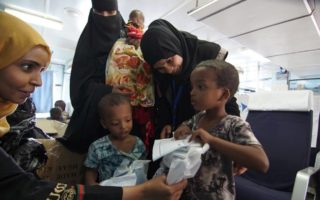
UNHCR staff unload aid from an aircraft in Mogadishu for distribution to families affected by flooding in central Somalia’s Hiran region, November 2019. © UNHCR/William Ejalu
This is a summary of what was said by UNHCR spokesperson Babar Baloch – to whom quoted text may be attributed – at today’s press briefing at the Palais des Nations in Geneva.
UNHCR, the UN Refugee Agency, has rushed humanitarian assistance to thousands of people in Somalia’s Puntland region impacted by Cyclone Gati, the strongest tropical cyclone ever recorded in the east African country.
Working with the World Food Programme and other partners, UNHCR has airlifted supplies from Mogadishu to Bosaso.
Gati made landfall on 22 November in Puntland’s Bari region, bringing around two-years of rainfall in a just a few days and affecting over 180,000 people, of which some 42,000 were displaced from their homes.
Over the last three and half decades, Somalia has experienced 15 tropical storms and cyclones together with flash floods. Extreme weather events are part of a global pattern of stronger storms caused by climate change and warmer ocean temperatures.
In Somalia, Cyclone Gati is resulting in a humanitarian emergency on top of existing emergencies in a country grappling with conflict, the coronavirus pandemic and desert locusts, making this an exceptionally difficult year for those displaced in Somalia.
UNHCR will assist 36,000 cyclone victims in the hard-hit Bari region with relief items, including mosquito nets, solar lamps, jerry cans, soap, blankets, sleeping mats, kitchen sets and plastic sheets and /or cash transfers for emergency shelter. Our humanitarian assistance is reaching internally displaced people, refugees and members of local host communities.
This emergency response follows an appeal by the Puntland regional government requesting humanitarian assistance.
Many of those displaced by the cyclone are now returning to damaged or destroyed homes and settlements. The cyclone has also separated families, destroyed livelihoods and increased the risk of gender-based violence
The world’s vulnerable face some of the worst effects of climate change, including food, water, and land insecurity, and disrupted services necessary for human health, livelihood, settlement, and survival. Invariably, among the most affected are older people, women, children and people with disabilities.
Some 2.6 million people are currently displaced inside Somalia – mainly due to conflict, but increasingly due to climate-related shocks such as severe droughts and flooding.
The UNHCR-led Protection Return Monitoring Network (PRMN) in Somalia has recorded nearly 1.3 million new displacements so far this year, more than 70 per cent of which were driven by flooding.
For more information on this topic, please contact:
- In Nairobi, Njoki Mwangi, mwangin@unhcr.org, +254 720 134 103
- In Mogadishu, Mahsa Izadpanah, izadpana@unhcr.org, +252 613 643 710
- In Geneva, Boris Cheshirkov, cheshirk@unhcr.org, +41 794 337 682
- In New York, Kathryn Mahoney, mahoney@unhcr.org, +1 347 443 7646
Originally published by UNHCR on 18 December 2020.





